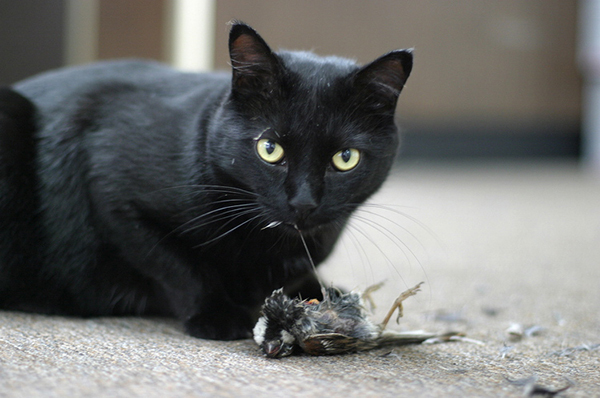Gisborne District Council is currently consulting on its Regional Pest Management Plan. If you want cats to be managed effectively in this region then this needs to be included in the plan. GDC will only do something if people stand up and ask for it.
Why cats currently slip through the net
Most of the species that harm our native species are managed in some way. Possums, stoats and rats are trapped or poisoned. Dogs are managed, and if they are found wandering without identification are rehomed or humanely euthanised.
Currently feral cats are defined as a pest in the GDC pest management plan. But in populated areas there is no way to enforce this because there is no way to tell if a cat is a feral, stray or pet. So generally speaking cats don’t get managed anywhere near people’s houses.
This is a massive issue – in many sensitive wildlife areas locals are trapping rats and stoats, only to see precious native wildlife falling prey to cats. It wastes all their hard effort in trying to save our native species and restore these important areas.
How could Gisborne District Council manage cats?
To manage cats we need to be able to identify if a cat is owned, either with a microchip or collar.
Under the pest management plan, GDC could define a feral cat as a cat without a microchip or other identifier (such as a collar or harness).
Any cats found wandering in sensitive wildlife areas could be checked for identification. If they have identification they could be returned to their owners, and if not, they could be rehomed or humanely euthanised.
Sensitive Wildlife Areas
When native birds are nesting and fledging they are at their most vulnerable to wandering cats and dogs. Dogs are managed already, so they shouldn’t be wandering off their leads in sensitive wildlife areas. However, there is no way to stop cats from wandering in these areas, particularly when they are near houses.
The plan will enable areas to be deemed sensitive wildlife areas so they have an extra level of protection.
But my cat isn’t a pest!
Getting your cat microchipped will also help keep it safe. Not only will it ensure that it isn’t mistaken for a feral cat, but microchips generally reduce your cat’s chances of getting lost. After the Christchurch earthquake, more than 80% of the lost cats with microchips found their way home, whereas only 15% of the cats without microchips did the same.
People are constantly surprised to find how far their cats can wander – up to 2.4km in rural areas and around half that on the urban fringe. So if you live any where near a wildlife area then your cat could potentially be wandering through it. Cats also only bring home 1 in 5 things that they kill on average, so just because you haven’t seen your cat with a native bird or lizard doesn’t mean they don’t kill them.
Spreading disease
As well as killing native wildlife cats carry and spread diseases like toxoplasmosis. Toxo affects humans and is especially risky to pregnant women. Toxo is also a serious risk to sheep – causing them to abort foetuses early. Farmers currently immunise against toxoplasmosis (a costly exercise) but the immunisation isn’t 100% effective and whole flocks of sheep can be affected. Controlling feral cats reduces the spread of toxoplasmosis.
We’ve made it easy to submit online
To make your life easy we have only included the questions that are relevant to cats. You can make a full submission here
[gravityform id=”22″ title=”false” description=”false”]

